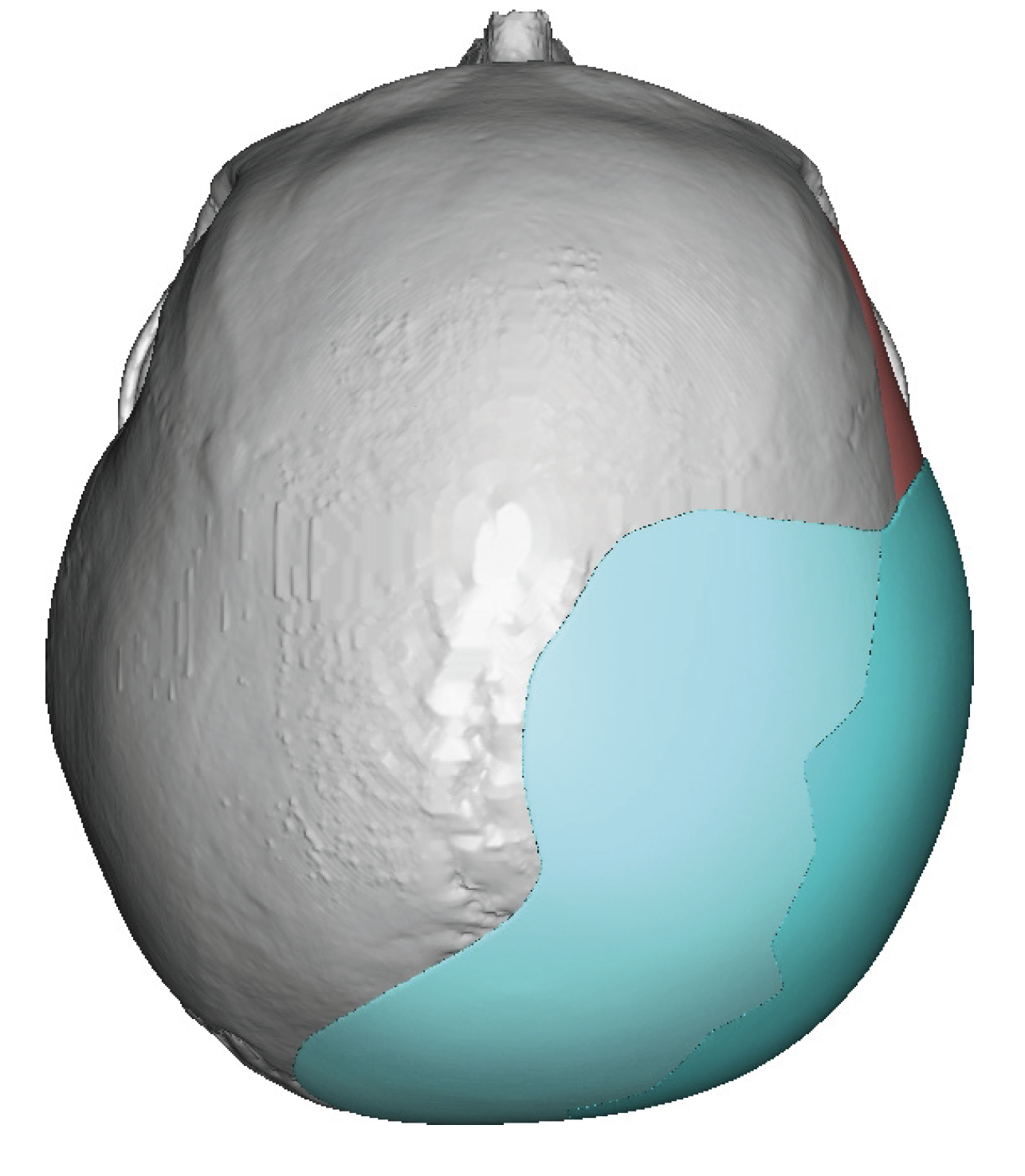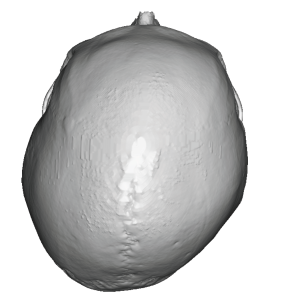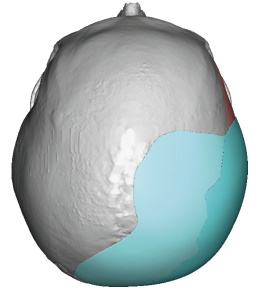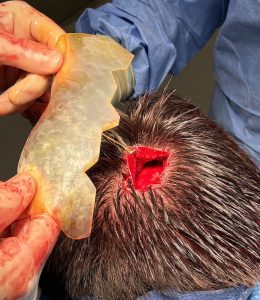Background: Plagiocephaly is the most recognized and frequently occurring aesthetic skull deformity. While it affects the head overall it greatest aberration in skull shape is posteriorly. Flatness of the back of the head is the sine qua non of plagiocephaly for most patients which is where it is usually seen most significantly.Often called occipital flattening anatomically it is flattening of the triad bony areas of the occipital, parietal and posterior temporal areas. While it is a unilateral deformity and can affect either sides of the back of the head, it is seen far more frequently on the right side in my experience.
The most effective treatment for adult plagiocephaly is onlay augmentation. Bony manipulation via osteotomies is not an option in an adult and only used in infants due their thinner bone and considerable unrealized growth potential. Bone cements are today a poor onlay augmentation option compared to custom skull implant which offer the greater amount of asymmetry correction, an assured predetermined shape and a small scalp incision compared to its size to place it.
In skull augmentations in general aesthetic improvements are always sought of which the most significant one is the scalp incision itself. The goal is always to make the smallest scalp incision that is possible compared to the size of the implant. One technique is a split implant design. This reduces the greatest width of the implant in half which permits a smaller scalp incision to be used. Blindly re-assembling the implant inside the pocket is a challenge but the way the implant is split in the design can help in that regard. Split implant designs can be used in plagiocephaly corrections like any other aesthetic skull augmentation.

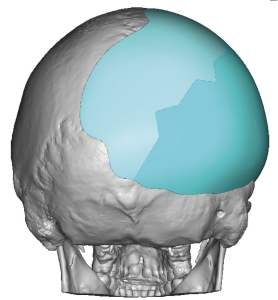
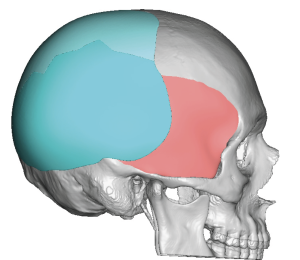
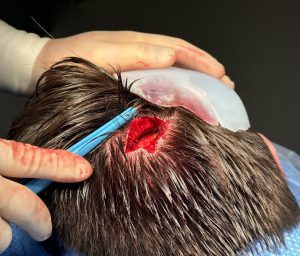
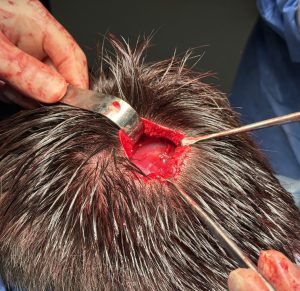
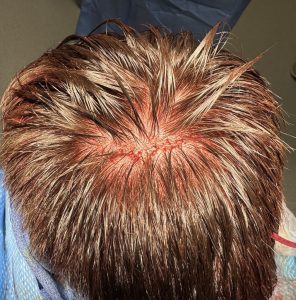
Key Points:
1) Plagiocephaly is most associated with flattening of one side of the back of the head usually seen more on the right than the left.
2) Hair can camouflage plagiocephaly to a large degree but that doesn’t eliminate the patient’s insecurity about their head shape.
3) A two-piece custom skull implant can provide good symmetry improvement in the asymmetric back of the head with the smallest scalp incision possible.
Dr. Barry Eppley
World-Renowned Plastic Surgeon

